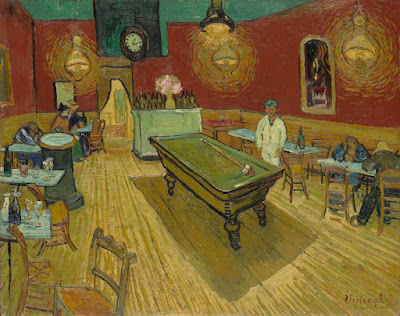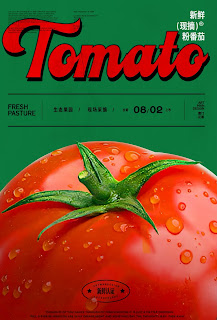TASK1 :EXPLORATION
TASK1:EXPLORATION
FANN WONG JING EN|0382237
Design Principles | Bachelor of Design (Honours) in Creative Media
————————————————————————————
ELEMENT OF DESIGN
• Point: Point is the most basic design element. The size, position and closeness of the point have a great influence on the composition of the design.
• Line: Line it can be straight, curved or broken line. The thickness, length and direction of the line can express different emotions and intentions.
• Shapes: Shapes can be divided into geometric and organic shapes (irregular, the outlines of natural objects). Shapes can also express emotions. For example, circles often bring a sense of smoothness and non-aggression, while sharp corners may bring tension.
• Textures: Textures affects the touch, visual effect and overall atmosphere, such as wood, metal, glass, cloth, etc.
• Space: Reasonable use of space can create visual balance and rhythm, enhance the readability and comfort of the design. Appropriate white space is to give people a chance to rest in the work
• Color: Color is a key element in design and can directly affect emotional response and visual perception. Different colors have different psychological effects. For example, red often brings passion or anger, while blue often gives people a sense of calmness and tranquility.
——————————————————————————————————————————
Gestalt theory
1. Proximity
2. Similarity
3. Continuity
4. Closure
5. Symmetry
6. Regionalization principle
• Compare the same thing or different things with certain differences to form a comparative
• Establish reference points, create conflicts, and compare and contrast very different things together to create a strong contrast.
Emphasis
• The color of a part contrasts with the softer or monotonous colors around it, thus highlighting a certain part.
Balance
There are four principles of balance: asymmetrical balance, radiant balance, axisymmetric balance and symmetrical balance.• Asymmetrical balance: Achieving visual balance through contrast, proportion and position arrangement. This balance is often created through contrast in size, color or shape.
• Radiant balance: Elements are evenly distributed around a center point, radiating out like rays. Commonly seen in designs with patterns such as circles and spirals. The golden ratio is one example
• Axisymmetric balance: Elements are symmetrically distributed around an axis. This balance is similar to symmetrical balance, but the focus is on the arrangement of elements along a specific axis. For example, the rule of thirds
• Symmetrical balance:By keeping the elements on both sides or in the upper and lower parts of the picture similar, a mirror symmetry effect is achieved, giving a sense of stability and symmetry.
Repetition
•Repeating certain elements, such as graphics, colors, fonts, or images, can be used to strengthen a design and emphasize a specific theme or message.
Movement
•Through the arrangement of elements such as shape, line, color, and composition, the work presents a sense of dynamics or guides the audience's eyes to flow through the work.
Harmony & Unity
•Through the reasonable matching and coordination of various elements, the whole work forms a visual sense of integrity, coherence and consistency.
•This technique aims to make all artistic elements (such as shape, color, line, texture, etc.) echo each other in the work, avoid visual conflict or confusion, and create a harmonious visual effect.Symbol
•A symbol is usually a visual element with symbolic meaning. It can connect with the audience through culture, history, social background or general cognition, thereby conveying the deeper meaning behind it.•Symbols are usually concise and abstract, able to quickly convey information and avoid complex descriptions
fig2.3 symbol <cletabraham>
Word and Image
•Word is the primary means of delivering specific and direct information.
•Images enhance the design through visual appeal, emotional communication, and simplification of complex information.
•When words and images work together, words can provide detailed descriptions, while images can visually present themes or emotions. Together, they can help viewers understand the message of a design more clearly and quickly.
title of art:Sunday Afternoon on the Island of La Grande Jatte
artists:Georges Pierre Seurat
year:1884-1886
size:207.6 cm × 308 cm(81.7 in × 121.25 in)
medium of the art:canvas oil painting
source:https://www.google.com/Un dimanche après-midi à l'Île de la Grande Jatte
REASON I chose this painting because of the unique style of his dot painting and the shocking effect of the huge painting. I like the way dot painting combines various independent colors together but can coexist harmoniously. The colors blend naturally when viewed from a distance, and you can find many small details when you look closely, like a game of hide-and-seek, with a bunch of colors hidden in one color, and it is impossible to predict what other colors are mixed in. It also creates a peaceful and leisurely atmosphere, like a beautiful afternoon, people enjoying time in the lakeside park. The colors of the picture are very soft, the sun shines on the grass, the green shade of the trees casts shadows, and the lake presents a light blue, which makes people feel warm and comfortable. In addition, although the characters in the painting are doing their own things, the whole picture looks very orderly, not messy, but calm and comfortable. In general, this painting not only has beautiful colors, but also rich details and a sense of story, and you can find new things every time you look at it. It feels like spending a slow afternoon in a quiet park, which makes people relax and immerse themselves in it, so it is liked.
OBSERVATION Proximity:The dot-like strokes of color are arranged closely together, creating visual fusion and harmony. The proximity between the dots plays an important role in the work, allowing the colors to blend naturally in the eyes of the audience, enhancing the overall sense and three-dimensionality of the image.
artists:Georges Pierre Seurat
year:1884-1886
size:207.6 cm × 308 cm(81.7 in × 121.25 in)
medium of the art:canvas oil painting
source:https://www.google.com/Un dimanche après-midi à l'Île de la Grande Jatte
Balance: This is asymmetrical balance, through the even distribution of characters and elements in the picture, the visual sense of heaviness is avoided, thus ensuring the overall sense of balance.
Unity: Although the work is composed of countless different color points, it forms a harmonious whole through the combination of colors. Although each element such as characters, trees, and grass is independent, they are all integrated with the same color and light treatment, ensuring that the picture does not appear scattered or messy.



















Comments
Post a Comment